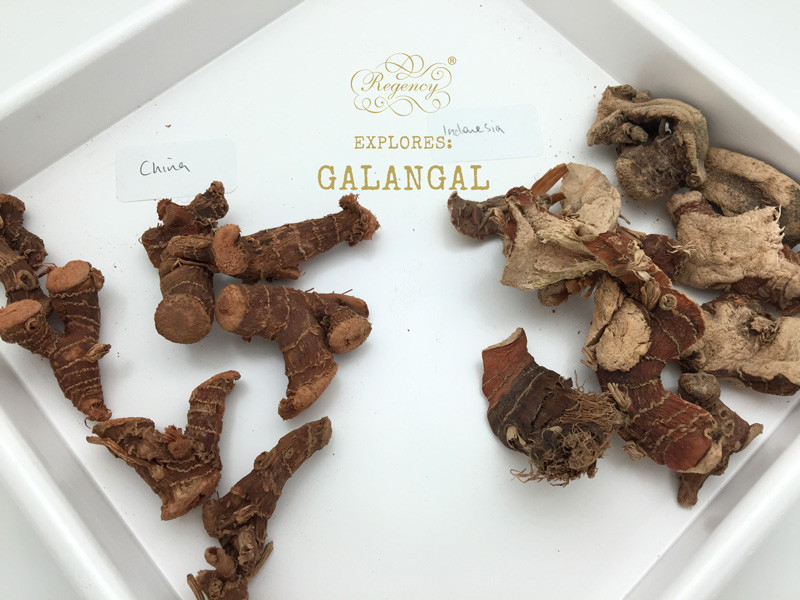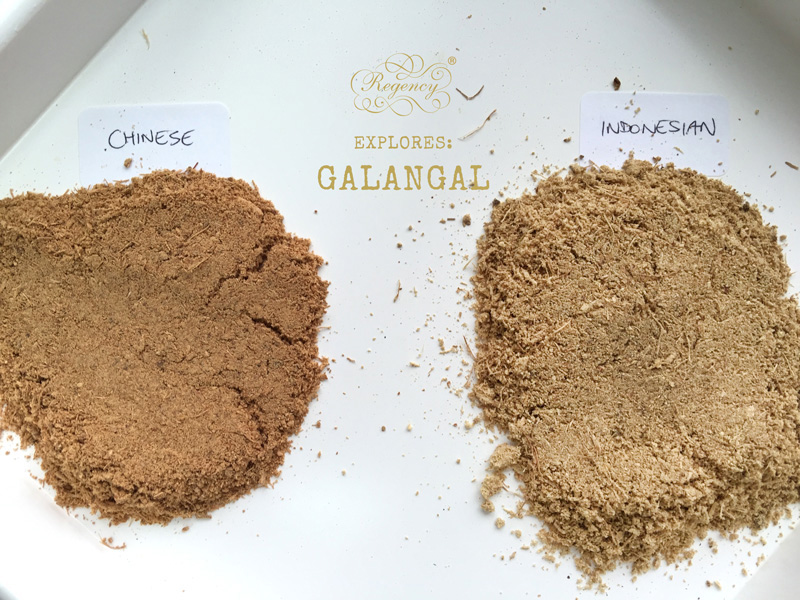Galangal is a peculiar spice when it comes to industry: Although the spice is native to Indonesia, the larger producer / exporter, to our knowledge, is China. Why is this so? Owing to the nature of the spice trade, fresh galangal can’t be sent long distance without the use of expensive air freight charges. As a result, dried needs to be sent over – this is mainly used for powdering and use by industry. It’s rarely seen by the end consumer.

We decided to try and get to the bottom of which is better, and why Chinese has been so favoured by importers. Firstly – the price. Indonesian commanded a far higher price, indirectly due to the weight.
In the picture above, it looks like there is a lot more Indonesian Galangal in the picture. Actually, by weight (which is what will matter when the time comes to use it), the Chinese Galangal actually weighs more by about 10%. Why? We found that the Dried Chinese Galangal is noticeably smaller in size, whereas the Dried Indonesian Galangal is sliced to bring the pieces down to a similar size. The skin weighs a lot more than the “body” of the spice inside, because the body loses a lot more water-weight in the drying process. Because it’s smaller in size, the Chinese Galangal loses noticeably less weight – most of the dried galangal left is the dark skin that you can see. The Indonesian Galangal, because it’s bigger, loses relatively more weight.
But what does all that mean for us handlers and consumers of the spice? Well, the Chinese Galangal has more skin – so we’d expect it to taste and smell less strong. On a quick sniff test, this was very, very true. Both are from the same crop year 2014-15 to eliminate that variable (Note: there is a possible variance of around 1 month, which is very small in the lifespan of dried spices).
The Indonesian Galangal smelt a bit sweeter as well as ginger-like, whereas the Chinese Galangal was a milder, but still distinctive ginger-like smell. However, we decided that this sniff test was not enough. The Indonesian Galangal could smell better because more of it’s body is exposed to air, in comparison to the Chinese Galangal where the exposed area is mainly skin. So, we decided to powder the two galangal varieties and try that way. This is how it’s going to be used after all!

The Indonesian Galangal is noticeably lighter in colour compared to the Chinese one – expected, as there’s less skin. We carefully then weighed 5 grams of each into a glass using our extremely sensitive weighing scale for the utmost accuracy.

Then these were passed around for our office to try. Immediate reactions? They both tasted far too strong! Although 5 grams is good enough for a normal teabag, as these were freshly ground, 5 grams is way too much of the spice. That said, there were differences noticed. The Chinese Galangal was less strong. The Indonesian Galangal was so intense that it was unbearable! We had our answer now: The Indonesian Galangal did taste intense, owing to the regional benefits for the herb. Much more intense flavours, so less Galangal needs to be used per use.
So why is the Chinese one preferred? We’re not 100% sure – but it could be a combination of the higher price, and the fact that the Indonesian Galangal is much lighter so it takes up more place inside a container, and therefore costs even more to transport. There are also Egyptian and Indian origins of Galangal, which we’ll also explore soon.
Hope this gave you insight on one of the world’s more exotic spices. Liked this article? You may also enjoy our findings for Cassia in Cassia: A real spice or a fake cinnamon.